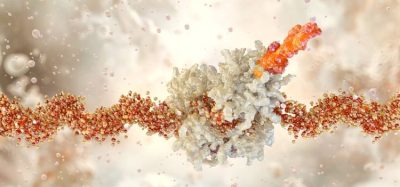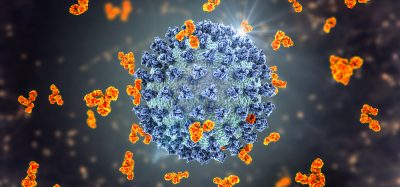Using self-amplifying mRNA vaccines to facilitate a rapid response to pandemic influenza
Posted: 3 July 2014 | Andrew J. Geall (Novartis Vaccines Inc.), Ethan C. Settembre (Novartis Vaccines Inc.), Jeffrey B. Ulmer (Novartis Vaccines Inc.) | No comments yet
Influenza viruses are members of the Orthomyxoviridae family and are a major cause of respiratory tract disease in humans and many animal species. There are three influenza virus types that cause human disease: A, B and C. Type A are further subtyped based on the antigenicity of the hemagglutinin (HA) and neuraminidase (NA) surface proteins and have been associated with serious epidemics and pandemics.
Sixteen HA and nine NA subtypes have been identified in birds (one of the natural hosts) and several subtypes have been transmitted to humans. The influenza virus genome is comprised of eight segments of negative-strand RNA that encode for 11 proteins. The genome is under continuous evolution due to random errors in viral replication that allow the virus to evade the host immune system through the genetic processes of antigenic drift and shift. Antigenic drift is the gradual evolution of viral strains due to frequent point mutations within the dominant antibody-binding sites in the HA and NA proteins, which potentially occurs every time the virus replicates. This process drives the need for continuous surveillance of the circulating seasonal influenza strains and their inclusion in the annual vaccination campaign. In contrast, antigenic shift is only seen in influenza A viruses and occurs by re-assortment (i.e., packaging of genes from two or more different viruses). This leads to a new virus subtype, which can result in a pandemic strain if the virus is pathogenic, can spread from human to human and a substantial portion of the population has no preexisting immunity. During the past 100 years, there have been four pandemics (see Table 1 on page 22), three of which have been associated with substantial disease burden and mortality.
The arsenal of public health tools to reduce morbidity and mortality from an influenza pandemic is limited, but includes vaccines, antiviral drugs, and interventions such as respiratory protection and social distancing. Vaccination remains the mainstay for the prevention and control of influenza for seasonal and pandemics applications, and there is broad diversity of approaches used to produce licensed influenza vaccine products. These include inactivated whole virus vaccines, detergent or solvent ‘split’ vaccines, purified subunit vaccines, recombinant proteins, and live attenuated vaccines. Most commercial influenza vaccines are produced in large dedicated facilities using egg-based production methods originally developed many decades ago. Recently, cell culture systems have been introduced that both reduce reliance on eggs and potentially increase vaccine match to circulating viruses by dispensing with the need for egg adaptation. Even as recent as the 2012-2013 season, vaccine virus egg adaptations has likely contributed to lower vaccine effectiveness. For both production methods, it typically takes 17-22 weeks from preparation of the seed strain until vaccine can be shipped. The bestcase scenario is a timeframe of four months from placement of orders to availability of production lots for distribution.
Response to the 2009 H1N1 pandemic
There are substantial barriers that need to be overcome to develop, produce, and distribute a pandemic vaccine in a timely fashion in order to disrupt human-to-human virus transmission and prevent disease. This was highlighted in 2009 when a new influenza A (pH1N1) virus first emerged in Mexico and California, and subsequently quickly spread globally. The virus was antigenically distant from recently circulating seasonal strains and on 11 June the World Health Organisation announced community level outbreaks of the new virus in multiple regions of the world, indicating that an influenza pandemic was underway7. Three months later, several manufacturers had completed vaccine development, received regulatory authorisation, scaled-up production and begun to supply vaccines8. Despite the unprecedented speed of the response to this pandemic, substantial quantities of vaccine were only available in November 2009 after the second pandemic wave had peaked9,10. Furthermore, the amount of vaccine available for widespread use was constrained by the limited global manufacturing capacity, which resulted in significant vaccine supplies available mostly in high-income countries. Vaccine effectiveness during the 2009-2010 season ranged from 66 per cent to 93 per cent, based on published studies conducted in Europe, UK, Canada, China and Korea11. The 2009 pandemic made it clear that both increases in production (rate and total amount) and improvements in assays (e.g. release assays) could lead to improved pandemic preparedness speeding vaccine release by weeks or more.
Response to the 2013 H7N9 outbreak in China
The timing of delivery for the 2009 H1N1 pandemic vaccine provided a strong impetus for the development of next-generation vaccine technologies that are more amenable to a rapid response12-15. While the recent H7N9 outbreak in China raised considerable concerns due to its pathogenicity in humans, reports of human-to-human spread are limited and it has not yet been designated as a pandemic. Nevertheless, several efforts are now underway to produce and test vaccines developed against the new H7N9 virus. These include mammalian cell culture-based vaccines16, novel influenza virus seed production techniques17, VLP-based vaccines expressed from insect cells18 and plants19, a recombinant subunit vaccine expressed from insect cells20, a live attenuated vaccine21, mRNA22 and pDNA23 vaccines. Several clinical trials are underway to evaluate these new technologies for immunological potency and data should be forthcoming this year. However, vaccine potency is only one of the critical parameters that will determine the ability to respond to future influenza outbreaks. Other important factors include the speed, manufacturing robustness, availability of strain-specific release reagents, and production capacity of the process used to manufacture the vaccine. This paper will describe self-amplifying mRNA vaccines that can be rapidly generated using synthetic production methods, thus may have a production advantage over other technologies.
Self-replicating mRNA as a disruptive vaccine technology
In 1990, Wolff et al24 demonstrated that direct injection of messenger RNA (mRNA) or plasmid DNA (pDNA) into skeletal muscle of a mouse resulted in expression of the encoded protein. The feasibility of developing a prophylactic mRNA vaccine was initially uncertain given concerns about RNA instability and large-scale manufacturing. Hence, DNA became the focus of nucleic acid vaccine research and development for the subsequent 20 years25-27. However, recently, vaccination with in vitro transcribed mRNA encoding viral antigens has become an increasingly promising alternative to pDNA vaccines14, 22, 28-30. Advancement has been enabled by the development and implementation of new technologies to improve RNA stability, delivery, and large-scale production28, 31-34. Naturally transient and cytosolically-restricted mRNA can now be produced at sufficient quantity and quality for human clinical trials28,33 and is considered to be a safer and more potent alternative to pDNA vaccination29,32. Currently, there are two distinct forms of RNA vaccines based on the auto-replicative capacity of the mRNA: 1) conventional, non-amplifying mRNA molecules and 2) self-amplifying mRNA or replicons that maintain replicative activity based on the RNA-dependent RNA polymerase and regulatory sequences from an RNA virus28,30. As a testament to the strong potential of mRNA-based technology, an increasing number of companies have entered the mRNA-technology space, including Biomay AG, BioNTech AG, CureVac, Ethris, eTheRNA BVBA, Moderna Therapeutics, Novartis Vaccines, Inc., Ribological GmbH, Tekmira Pharmaceuticals Corporation, TriLink BioTherapeutics. RNA vaccines have all the hallmarks of a disruptive innovation that brings a completely new approach to vaccine production utilising a simple, synthetic and cell-free process, and could enable many new products in the future35.
Using self-amplifying mRNA as a rapid response platform for pandemic influenza
The utility of self-amplifying mRNA vaccines29 and their use as a rapid response platform for pandemic influenza have been recently described22. This platform is based on a synthetic, self-amplifying mRNA, delivered by a synthetic lipid nanoparticle (LNP). The mRNA is produced in a few hours by a cell-free enzymatic transcription reaction, which avoids the use of micro-organisms or cultured cells in manufacturing, and enables simple downstream purification with very rapid and cost-effective manufacturing14,33. The self-amplifying mRNA is based on an engineered alphavirus genome36 containing the genes encoding the alphavirus RNA replication machinery, but lacking the genes encoding the viral structural proteins required to make an infectious alphavirus particle (see Figure 1). For a pandemic influenza vaccine the structural protein genes would be replaced with genes encoding the HA protein antigen, then abundantly expressed from a subgenomic mRNA in the cytoplasm of cells transfected with these self-amplifying RNAs.
On 31 March 2013, the China Center for Disease Control and prevention (China CDC) announced a human influenza outbreak with an H7N9 avian influenza strain and posted HA and NA gene coding sequences on the Global Initiative for Sharing All Influenza Data (GISAID) system37. As a proof of concept for the rapid response capability of the SAM vaccine platform, cell-free gene synthesis and enzymatic error correction were used to make a synthetic HA gene17. This gene was then cloned into the mRNA vaccine DNA template and, using an enzymatic in vitro transcription reaction, the vaccine was produced in eight days. The vaccine was then tested in mice and shown to be immunogenic, at levels considered protective22.
Future prospects
The SAM vaccine platform has the following four attributes that make it an ideal rapid response platform for pandemic influenza:
- Completely synthetic processes that are amenable to automation and rapid manufacture of drug product
- Robust, generic processes to manufacture vaccines against any influenza strain reproducibly not requiring long-lead time release reagents
- A small manufacturing footprint with standard, disposable equipment
- Raw materials that can be stockpiled and production equipment that can be co-located in a single facility, enabling rapid progression from gene sequence to vaccine product.
Ongoing work is focused on establishing a Good Manufacturing Practices (GMP) compliant process that will enable the production of much larger quantities of RNA that meets regulatory requirements for human use. Research efforts are focused on further innovations in vector design and non-viral delivery of RNA to capitalise on the unique production capabilities of self-amplifying mRNA vaccines. Although the effective dose of self-amplifying RNA for humans remains to be determined, it is expected to be well below a milligram29. Figure 2 models the expected production capacity from an enzymatic in vitro transcription reaction, based on conservative assumptions of a 5mg/ml yield of RNA and a 20 per cent loss during purification. Proof of concept for viral delivery of a self-amplifying mRNA replicon has already been achieved in humans38, where doses ranging from 1×107 to 1×108 infectious units of viral replicon particles (VRP) were shown to be immunogenic. Here the mRNA is packaged into virus-like particles by providing the viral structural proteins in trans36. This is achieved by transient RNA co-transfection in cell culture or a packaging cell line, both of which will be difficult to scale-up for commercial production. In animal models, non-viral LNP delivery of self-amplifying mRNA vaccines has been shown to elicit comparable immune responses to VRPs29. If this platform technology proves to be a disruptive innovation35, it is reasonable to assume that, with further improvements in RNA vector design and non-viral delivery, effective immune responses in humans could be achieved with 1-100 micrograms of RNA. If so, millions of doses of vaccines could be rapidly produced from a one litre cell-free enzymatic transcription reaction (see Figure 2).
If this vaccine platform proves safe, potent, well-tolerated, and effective in humans, fully synthetic self-amplifying mRNA vaccines could provide unparalleled speed of response to influenza outbreaks, potentially generating vaccine candidates within days after the discovery of a new virus strain. Further, these vaccines will be well-matched to circulating viruses, avoiding any antigenic differences that can arise through egg-adapted virus mutations. SAM technology may obviate the need for potency assay reagents that require long-lead time. This vaccine platform could also offer a potential solution for a wide range of additional pathogens, due to the versatility of the manufacturing processes.
References
- Carrat F, Flahault A. Influenza vaccine: the challenge of antigenic drift. Vaccine. 2007;25(39-40):6852-62. Epub 2007/08/28.
- Iskander J, Strikas RA, Gensheimer KF, Cox NJ, Redd SC. Pandemic influenza planning, United States, 1978-2008. Emerging infectious diseases. 2013;19(6):879-85. Epub 2013/06/05.
- Dawood FS, Iuliano AD, Reed C, Meltzer MI, Shay DK, Cheng PY, et al. Estimated global mortality associated with the first 12 months of 2009 pandemic influenza A H1N1 virus circulation: a modelling study. The Lancet infectious diseases. 2012;12(9):687-95. Epub 2012/06/29.
- Osterholm MT, Ballering KS, Kelley NS. Major challenges in providing an effective and timely pandemic vaccine for influenza A(H7N9). JAMA : the journal of the American Medical Association. 2013;309(24):2557-8. Epub 2013/05/24.
- Nichol KL, Treanor JJ. Vaccines for seasonal and pandemic influenza. J Infect Dis. 2006;194 Suppl 2:S111-8. Epub 2006/12/14.
- Skowronski DM, Janjua NZ, De Serres G, Sabaiduc S, Eshaghi A, Dickinson JA, et al. Low 2012-13 Influenza Vaccine Effectiveness Associated with Mutation in the Egg-Adapted H3N2 Vaccine Strain Not Antigenic Drift in Circulating Viruses. PLoS One. 2014;9(3):e92153. Epub 2014/03/29.
- New influenza A (H1N1) virus: global epidemiological situation, June 2009. Wkly Epidemiol Rec. 2009;84(25):249-57. Epub 2009/06/23.
- Abelin A, Colegate T, Gardner S, Hehme N, Palache A. Lessons from pandemic influenza A(H1N1): the research-based vaccine industry’s perspective. Vaccine. 2011;29(6):1135-8. Epub 2010/12/01.
- Neumann G, Kawaoka Y. The first influenza pandemic of the new millennium. Influenza Other Respi Viruses. 2011;5(3):157-66. Epub 2011/04/12.
- Tizzoni M, Bajardi P, Poletto C, Ramasco JJ, Balcan D, Goncalves B, et al. Real-time numerical forecast of global epidemic spreading: case study of 2009 A/H1N1pdm. BMC Med. 2012;10:165. Epub 2012/12/15.
- Broadbent AJ, Subbarao K. Influenza virus vaccines: lessons from the 2009 H1N1 pandemic. Current opinion in virology. 2011;1(4):254-62. Epub 2011/11/30.
- Dormitzer PR, Tsai TF, Del Giudice G. New technologies for influenza vaccines. Hum Vaccin Immunother. 2012;8(1):45-58. Epub 2012/01/19.
- Mooney AJ, Tompkins SM. Experimental vaccines against potentially pandemic and highly pathogenic avian influenza viruses. Future Virol. 2013;8(1):25-41. Epub 2013/02/27.
- Petsch B, Schnee M, Vogel AB, Lange E, Hoffmann B, Voss D, et al. Protective efficacy of in vitro synthesized, specific mRNA vaccines against influenza A virus infection. Nat Biotechnol. 2012;30(12):1210-6. Epub 2012/11/20.
- Rappuoli R, Dormitzer PR. Influenza: options to improve pandemic preparation. Science. 2012;336(6088):1531-3. Epub 2012/06/23.
- Settembre EC, Dormitzer PR, Rappuoli R. Bringing influenza vaccines into the 21st century. Human vaccines & immunotherapeutics. 2013;10(3). Epub 2014/01/01.
- Dormitzer PR, Suphaphiphat P, Gibson DG, Wentworth DE, Stockwell TB, Algire MA, et al. Synthetic generation of influenza vaccine viruses for rapid response to pandemics. Science translational medicine. 2013;5(185):185ra68. Epub 2013/05/17.
- Smith GE, Flyer DC, Raghunandan R, Liu Y, Wei Z, Wu Y, et al. Development of influenza H7N9 virus like particle (VLP) vaccine: homologous A/Anhui/1/2013 (H7N9) protection and heterologous A/chicken/Jalisco/CPA1/2012 (H7N3) cross-protection in vaccinated mice challenged with H7N9 virus. Vaccine. 2013;31(40):4305-13. Epub 2013/07/31.
- D’Aoust MA, Couture MM, Charland N, Trepanier S, Landry N, Ors F, et al. The production of hemagglutinin-based virus-like particles in plants: a rapid, efficient and safe response to pandemic influenza. Plant biotechnology journal. 2010;8(5):607-19. Epub 2010/03/05.
- Cox MM. Recombinant protein vaccines produced in insect cells. Vaccine. 2012;30(10):1759-66. Epub 2012/01/24.
- Rudenko L, Kiseleva I, Naykhin AN, Erofeeva M, Stukova M, Donina S, et al. Assessment of Human Immune Responses to H7 Avian Influenza Virus of Pandemic Potential: Results from a Placebo-Controlled, Randomized Double-Blind Phase I Study of Live Attenuated H7N3 Influenza Vaccine. PLoS One. 2014;9(2):e87962. Epub 2014/02/18.
- Armin H, Sylvie B, Jacob A, Daniel GG, Giuseppe P, Luis AB, et al. Rapidly produced SAM® vaccine against H7N9 influenza is immunogenic in mice. Emerging Microbes & Infections. 2013;2(8).
- Laddy DJ, Yan J, Kutzler M, Kobasa D, Kobinger GP, Khan AS, et al. Heterosubtypic protection against pathogenic human and avian influenza viruses via in vivo electroporation of synthetic consensus DNA antigens. PLoS One. 2008;3(6):e2517. Epub 2008/06/26.
- Wolff JA, Malone RW, Williams P, Chong W, Acsadi G, Jani A, et al. Direct gene transfer into mouse muscle in vivo. Science. 1990;247(4949 Pt 1):1465-8.
- Kutzler MA, Weiner DB. DNA vaccines: ready for prime time? Nat Rev Genet. 2008;9(10):776-88.
- Liu MA. DNA vaccines: an historical perspective and view to the future. Immunol Rev. 2011;239(1):62-84. Epub 2011/01/05.
- Weiner DB. RNA-based vaccination: sending a strong message. Mol Ther. 2013;21(3):506-8. Epub 2013/03/02.
- Geall AJ, Mandl CW, Ulmer JB. RNA: the new revolution in nucleic acid vaccines. Seminars in immunology. 2013;25(2):152-9. Epub 2013/06/06.
- Geall AJ, Verma A, Otten GR, Shaw CA, Hekele A, Banerjee K, et al. Nonviral delivery of self-amplifying RNA vaccines. Proc Natl Acad Sci U S A. 2012;109(36):14604-9. Epub 2012/08/22.
- Deering RP, Kommareddy S, Ulmer JB, Brito LA, Geall AJ. Nucleic acid vaccines: prospects for non-viral delivery of mRNA vaccines. Expert opinion on drug delivery. 2014. Epub 2014/03/29.
- Kallen KJ, Heidenreich R, Schnee M, Petsch B, Schlake T, Thess A, et al. A novel, disruptive vaccination technology: Self-adjuvanted RNActive vaccines. Human vaccines & immunotherapeutics. 2013;9(10). Epub 2013/08/08.
- Pascolo S. Messenger RNA-based vaccines. Expert Opin Biol Ther. 2004;4(8):1285-94.
- Pascolo S. Vaccination with messenger RNA (mRNA). Handb Exp Pharmacol. 2008(183):221-35. Epub 2007/12/12.
- Pollard C, De Koker S, Saelens X, Vanham G, Grooten J. Challenges and advances towards the rational design of mRNA vaccines. Trends in molecular medicine. 2013;19(12):705-13. Epub 2013/10/22.
- Kaslow DC. A potential disruptive technology in vaccine development: gene-based vaccines and their application to infectious diseases. Transactions of the Royal Society of Tropical Medicine and Hygiene. 2004;98(10):593-601. Epub 2004/08/04.
- Perri S, Greer CE, Thudium K, Doe B, Legg H, Liu H, et al. An alphavirus replicon particle chimera derived from venezuelan equine encephalitis and sindbis viruses is a potent gene-based vaccine delivery vector. J Virol. 2003;77(19):10394-403. Epub 2003/09/13.
- Chen Y, Liang W, Yang S, Wu N, Gao H, Sheng J, et al. Human infections with the emerging avian influenza A H7N9 virus from wet market poultry: clinical analysis and characterisation of viral genome. Lancet. 2013. Epub 2013/04/30.
- Bernstein DI, Reap EA, Katen K, Watson A, Smith K, Norberg P, et al. Randomized, double-blind, Phase 1 trial of an alphavirus replicon vaccine for cytomegalovirus in CMV seronegative adult volunteers. Vaccine. 2009;28(2):484-93. Epub 2009/10/28.
Biography
Andrew J. Geall, Ph.D. is the RNA Vaccine Platform Leader at Novartis Vaccines, Inc. (Cambridge, USA). He has undergraduate degrees in Chemical Engineering and Pharmacy and completed his Ph.D. in gene delivery at the University of Bath, U.K. in 1999. Before joining Novartis in 2006, Andrew was manager of the Pharmaceutics department at Vical (San Diego). Here, he led the formulation development of the company’s DNA vaccine programme and was responsible for production of the gene delivery systems for clinical trials. He joined Novartis Pharmaceuticals AG to lead the siRNA delivery efforts and in 2008 moved to the Vaccines Research Division to establish the RNA Vaccine Platform. He has made major contributions to the patent estate and publications for this novel technology. [email protected]
Ethan C. Settembre, Ph.D. is a Senior Project Leader for viral programmes at Novartis Vaccines and Diagnostics. He holds a B.S. and Ph.D. in biochemistry from Cornell University. Before joining Novartis in 2008, Ethan completed a post-doctoral fellowship at Harvard University Medical School focusing on structural biology of viral entry proteins. At Novartis he has had positions of increasing responsibility, ranging from developing vaccines for orphan diseases to leading research for influenza, respiratory syncytial virus and virus-like particles. [email protected]
Dr. Jeffrey B. Ulmer received his B.Sc. with honours from the Department of Chemistry at the University of Regina in 1978 and was the recipient of the Merit Award of the Society of Chemical Industry of Canada. He received his Ph.D. in biochemistry from McGill University in 1985 and completed his postdoctoral training in the laboratory of Nobel laureate Dr. George Palade in the Department of Cell Biology at Yale University School of Medicine. At Merck Research Laboratories and Chiron Corporation, Jeffrey conducted seminal studies on DNA vaccines, and novel vaccine adjuvants and delivery systems. He has published over 190 scientific articles, is on the editorial boards of Expert Opinion on Biological Therapy, Human Vaccines, and Expert Review of Vaccines. He is currently Global Head of External Research at Novartis Vaccines and Diagnostics, responsible for identification and assessment of new opportunities for collaborative research. [email protected]








